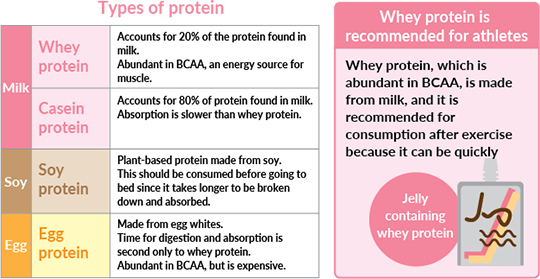Mystery solved : Lose Fat and Gain Muscle at the Same Time
You can lose fat and gain muscle at the same time, but… Not so fast – the truth is that multiple studies have shown that losing fat and gaining muscle at the same time can be done. Difficult, but possible. Only, it comes with a catch.

In the fitness world, it’s commonly believed that fat-burning and muscle-building are mutually exclusive goals ?
Why? Well, because to lose fat, your body needs to be in a caloric deficit – this forces your body to burn pre-existing fat stores for sustenance.
And to gain muscle, your body needs to be in a caloric surplus; this additional fuel you're getting into your system allows your body to both repair and build bigger muscles. Now, that sounds like the end of the world to many looking to improve their overall body composition, right?
You can lose fat and gain muscle at the same time, but…
Not so fast – the truth is that multiple studies (for example, this one, this one, and this one) have shown that losing fat and gaining muscle at the same time can be done. Difficult, but possible. Only, it comes with a catch. It's typically way easier if:
1. You’re still a beginner to weightlifting; you’ve only properly and consistently lifted for a year.
2. You’re detrained; you’ve taken a few months off training, or you’ve never consistently been to the gym at all.
3. You have quite a high body fat percentage (for example, more than 25%)
4. You're an intermediate lifter who's prepared for a 'slow cut.'
Unfortunately, if you're an advanced bodybuilder or exerciser (more than 2 – 3 years of consistent lifting) looking to put on massive amounts of muscle while also shedding large amounts of fat, it'll be nearly impossible. You'll have to choose between bulking or cutting – no questions about it.
But hey, if you identify with any of the four groups above, stick around for how you can build muscle, yet burn fat simultaneously. Lucky you, you'll get the most significant benefits of both muscle gain and fat loss!
#1 – Eat at a slight calorie deficit
There are no two ways about it: if you want to lose fat, you need to create a calorie deficit. That is, you eat fewer calories than the energy you burn at rest and during your workouts. If you're not sure of how much energy you expend daily (also known as your maintenance calories), refer to our past article 'Secrets to Getting Lean Body Mass.'
There, we've included a handy interactive calculator, which helps you figure out your estimated Basal Metabolic Rates (BMR)!
Once you’ve found your maintenance calories, subtract no more than 500 calories from it to create your deficit. The more trained you are, the smaller this deficit should be. Generally, beginners and detrained individuals will still be able to put on muscle mass despite being put on a higher calorie deficit.
Given that you'll be losing fat and gaining muscle at the same time, it's crucial to note that the number on the scale might not budge – or might even go up – so you'd need to depend on other measurements to track your progress. You can consider getting yourself a weighing scale that helps estimate your body fat percentage. Or, you could also pay extra attention to how your clothes are fitting you.
#2 – Maintain a high protein intake
If you want to keep your body in muscle-building mode while cutting calories, you have to dial your protein intake up. Adequate protein consumption ensures that your muscles have sufficient building blocks (amino acids) for repair and – most crucially – growth.
But don’t go chugging truckloads of protein powder just yet; research highlights that protein intakes over 1.6 grams per kilogram of bodyweight do not contribute to further muscle-building benefits.

So, if you're 70 kilograms, for example, you'd want to hit 112 grams of protein consumption daily. That's rough 720 grams (3 and a half slabs) of chicken breast. For the sake of your stomach, distribute your protein intake throughout the day. Protein is the macronutrient that scores the highest on satiety, after all.
What you can do is to include a protein source (lean fish, chicken breast, turkey, etc.) at every meal. Not only does this help you hit your protein requirements, but also keeps you full for longer, so you can stay within your calorie budget.

#3 – Continue lifting heavy in the gym
As you probably already know, you cause tiny tears in your muscle fibers when you lift weights – and this, in turn, prompts your body to help repair or replace those damaged fibers, making your muscles grow. If you don’t stimulate your muscles enough in the gym, they won’t grow.
Make sure that you're consistently getting stronger week-on-week by following a disciplined training program that puts you in the gym three to four times a week. You can progressively overload over time by either choosing to increase the number of reps done per set, or upping the weights used in your exercises.
Another way you can progressively overload is to ensure that you're performing all your exercises with a sufficient range of motion: going deeper on the back-squats, or even the leg press, so long as you have enough mobility for it.
It’ll take time; have patience
Do keep in mind that you probably won't notice a significant difference in your body composition within a few days or weeks. As with all things, body recomposition takes time and may take a few months or more, so you need to be consistent with your strength training and nutrition plan to get the results you want.
If you’re having difficulties reaching your goals because you aren’t exactly sure how you can structure your workouts, it might be time for you to download GymStreak.
This smart, AI-powered personal trainer app creates a workout plan that's individualized to your fitness goals. It helps you manage when you should increase your weights in the gym, so you never have to worry if you're indeed progressively overloading. All you need to do is show up and do the work!
Get GymStreakReferences
Antonio, J., Ellerbroek, A., Silver, T., Vargas, L., & Peacock, C. (2016). The effects of a high protein diet on indices of health and body composition – a crossover trial in resistance-trained men. Journal of the International Society of Sports Nutrition, 13. https://doi.org/10.1186/s12970-016-0114-2
Antonio, J., Peacock, C. A., Ellerbroek, A., Fromhoff, B., & Silver, T. (2014). The effects of consuming a high protein diet (4.4 g/kg/d) on body composition in resistance-trained individuals. Journal of the International Society of Sports Nutrition, 11, 19. https://doi.org/10.1186/1550-2783-11-19
Garthe, I., Raastad, T., Refsnes, P. E., Koivisto, A., & Sundgot-Borgen, J. (2011). Effect of two different weight-loss rates on body composition and strength and power-related performance in elite athletes. International Journal of Sport Nutrition and Exercise Metabolism, 21(2), 97–104.
Longland, T. M., Oikawa, S. Y., Mitchell, C. J., Devries, M. C., & Phillips, S. M. (2016). Higher compared with lower dietary protein during an energy deficit combined with intense exercise promotes greater lean mass gain and fat mass loss: A randomized trial. The American Journal of Clinical Nutrition, 103(3), 738–746. https://doi.org/10.3945/ajcn.115.119339
Morton, R. W., Murphy, K. T., McKellar, S. R., Schoenfeld, B. J., Henselmans, M., Helms, E., … Phillips, S. M. (2018). A systematic review, meta-analysis and meta-regression of the effect of protein supplementation on resistance training-induced gains in muscle mass and strength in healthy adults. British Journal of Sports Medicine, 52(6), 376–384. https://doi.org/10.1136/bjsports-2017-097608
